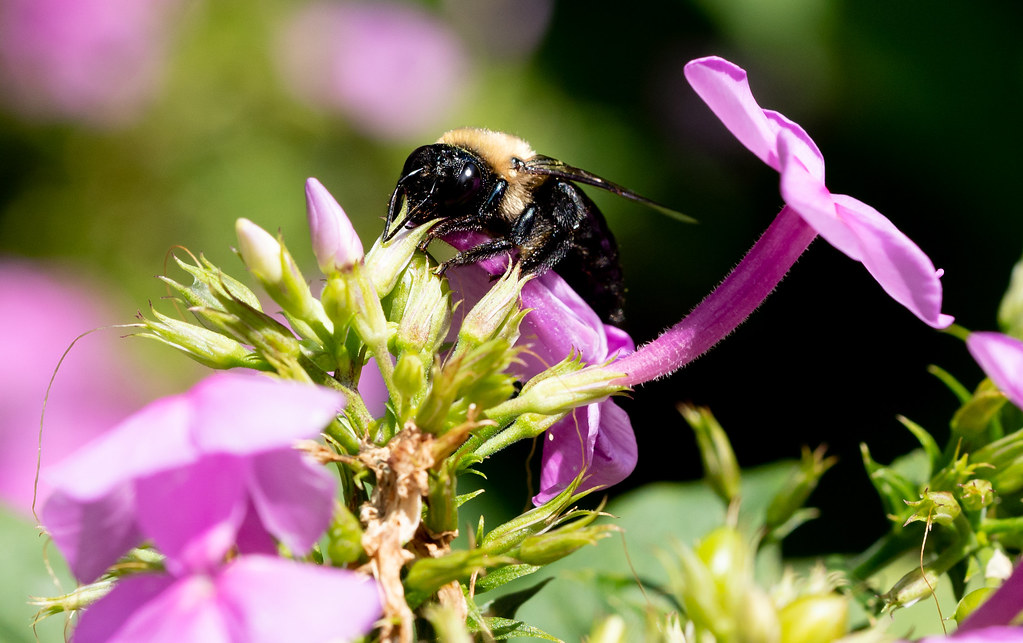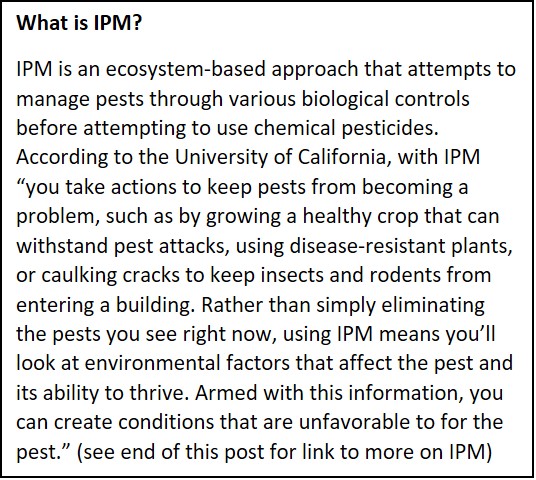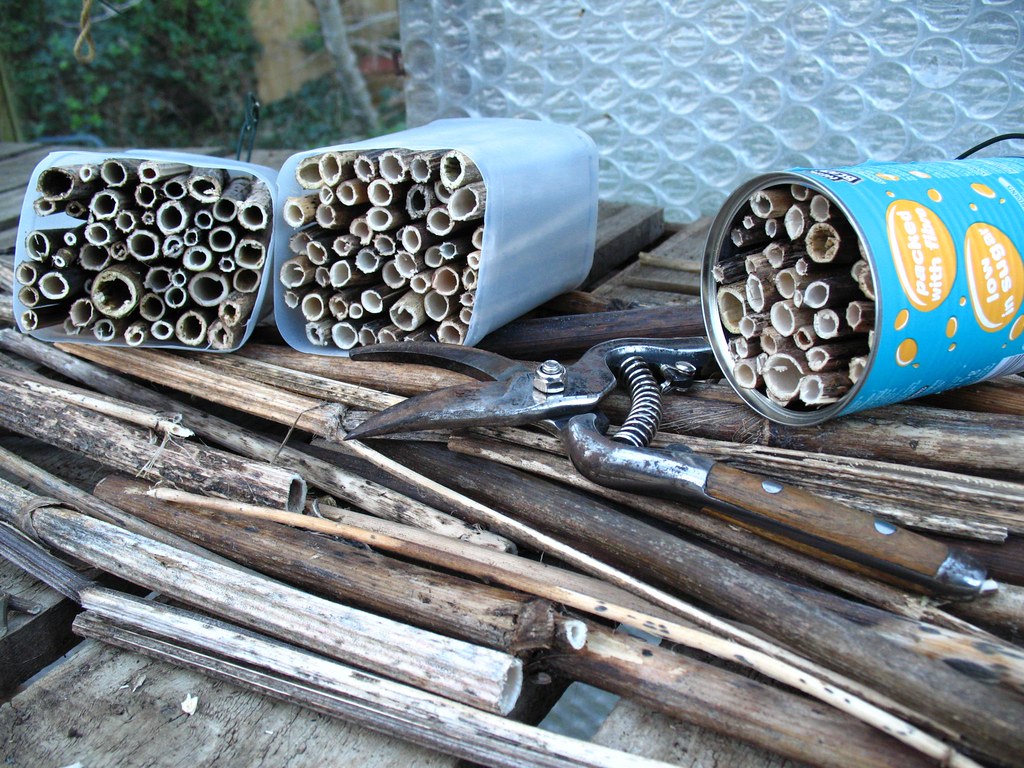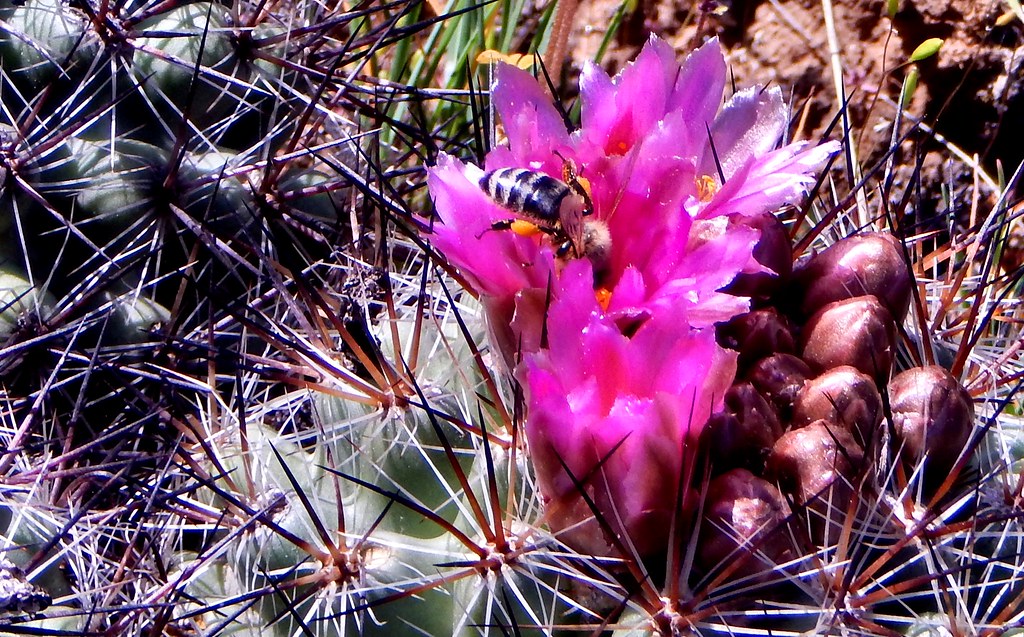I’m not usually one to celebrate “International Whatever” Days, but one, in particular, is near and dear to me personally, so I thought I’d take the opportunity to feature a study focused on this one tiny but important organism – the bee! World Bee Day was May 20th and is a day to raise awareness of the importance of these [and other] pollinators for biodiversity and global food security (etc.). (Wild bees were my study subjects for my Master’s thesis).
While grapevines are self-pollinating and thus aren’t reliant on bees or others to pollinate their flowers, there are many other benefits to encouraging bee presence in the vineyard, either directly or indirectly.
Up to 75% of crops are dependent upon or benefit from pollinators (either bees or other insects/animals), so keeping pollinators happy and healthy is of utmost importance to keeping most foods on the table. It’s not just honeybees either – wild bees play a huge role in pollinating crops, so even farms with managed honeybee hives still have many of their crops pollinated by wild bees.

While grapevines are self-pollinating and thus aren’t reliant on bees or others to pollinate their flowers, there are many other benefits to encouraging bee presence in the vineyard, either directly or indirectly. In a recent Decanter article, Nicole Rolet (of Ventoux’s Chêne Bleu wine estate) was quoted by Amy Wislocki as saying “although vines are self-pollinating, research shows that the best wines are made from soils teeming with life. Cross-pollinated biodiversity and a nutrient-rich microbiome are the defining contributors to long-term vineyard health and to the complexity of flavors in wine, eliminating the need for synthetic pesticides and fertilizers in the vineyard.”. (read that entire article here).
At Troon Vineyard in the Applegate Valley of Oregon, which produces wines using biodynamics and a minimalist approach, General Manager Craig Camp explained their relationship with pollinators and what they have been doing to help with the conservation efforts. Specifically, Camp said “at Troon, we have installed bee habitats and several pollinator habitats as part of our efforts to improve biodiversity. We do not harvest the honey, but we do rely on them to pollinate our cider apple trees. Mostly, I think we just love having the bees make our farm their home. Biodiversity is such a key element of biodynamics. The more life the better.”
Additionally, if a consumer is aware a vineyard is making efforts to improve biodiversity on the property, it could possibly lead to increased sales. Some studies have shown consumers may be willing to pay more for a sustainably produced wine, which a winery trying to “save the bees” would definitely fall under.
For these, and many other reasons not listed here (unless you want this post to become as long as my Master’s thesis), implementing conservation strategies for supporting a healthy wild bee population is crucial.
So, what sort of conservation strategies are we talking about here? First of all, one can reduce the levels of conventional chemical pesticides/fungicides that have been shown to negatively impact wild bee populations. This is already happening with organic and biodynamic viticulture, so that’s a good start. Also, providing the bees with a food source – like wildflowers – or nesting sources might help encourage wild bee activity and improve their overall biodiversity and health.
Much of the research on native/wild bee biodiversity in an agricultural setting has been with other crops, and not as much with grapevines, partially because grapevines don’t rely on bees for pollination. With many vineyards moving toward more organic-based or otherwise sustainable viticulture methods, there is a lot of potential for incorporating bee-friendly vineyard management practices that are not only beneficial for the vines and resulting wines, but to bee diversity and conservation.
Many vineyards are planting cover crops between vineyard rows – choosing cover crops that provide a good pollen source for the bees instead of one that is not bee-pollinated might be a step in the right direction for a vineyard looking to help improve native/wild bee biodiversity. However, food sources alone may not be enough to improve wild bee diversity. In fact, studies have shown that the structure of the landscape itself can affect wild be populations in vineyards, as not only do bees need something to eat, but they need a place to nest nearby as well.
A new study, published in the February 2020 issue of the journal Biological Conservation, aimed to evaluate wild bee biodiversity in organic versus conventionally managed vineyards, with the focus not just aimed toward the nearby food sources but also at the landscape level as well. Findings may help vineyards modify their management practices to not only produce high quality grapes/wines, but also to help with wild bee conservation efforts.
Brief Methods
This study took place in 2016 in the Rhinehessen region of Germany.
15 vineyard pairs were analyzed – each pair with two neighboring vineyards: one organic and one conventionally managed.

Conventionally managed vineyards followed the EU Directive 2009/128/EC, which uses standards of integrated pest management (IPM).
Vineyard pairs were separated by a minimum of 1000 meters, with vineyards within pairs being between 16 and 512 meters. Distances were chosen so that both vineyards in a pair would be accessible to the same foraging bees.
All vineyard sites performed alternating tillage (every other interrow was tilled one or two times per year).
At the landscape level, landscape complexity was defined as the amount of suitable nesting habitats within a 1000-meter radius. This radius was chosen to account for the max flight distance for the bee species studied. Landscape complexity ranged between 7.4 and 52.9% of the area covered by suitable nesting habitats.
Vegetation and floral resources were observed three times during the study (March, June, and September).
Trap nests were used to sample cavity-nesting wild bees and any parasites (ground-nesting bees were not analyzed in this study). Species were identified and abundance/diversity was calculated.
Selected Results

“Tools of the trade” by Nigel Jones is licensed under CC BY-NC-ND 2.0
- Organic vineyards had:
- increased vegetation heights by 53%
- 4x higher flower densities, and
- 47% higher floral diversity per square meter compared with conventionally managed vineyards.
- Organic vineyards had about 4 more “plant protection treatments” throughout the course of the study, which means more disturbance than in the conventionally managed vineyards.
- Average abundance of cavity-nesting bees was about 80% higher in organic vineyards compared to conventional vineyards.
- There was about 1 additional cavity-nesting bee species present in organic vineyards than the conventional vineyards.
- Total cavity-nesting bee abundance was increased by organic management practices and increased suitable nesting habitat availability.
- Species richness was most affected by the proximity to suitable nesting habitats (more important than the organic vineyard management aspect)
- Species richness was not significantly affected by vegetation type/flower density/flower diversity.
- Parasitism rates were higher in organic vineyards than in conventional vineyards, which is not surprising considering there were simply more bees present in the organic vineyards.
Conclusions
Overall, the results of this study provide some insight into how vineyard management practices might impact wild bee diversity.
In terms of vegetation alone, the organic vineyards contained more floral resources than conventionally managed vineyards. When looking at the cavity-nesting bee populations, results showed that average abundance was 80% higher in organic vineyards, however, species richness was NOT affected by the vegetation present. Species richness WAS affected by the proximity to suitable nesting habitats.
It helps to understand what species abundance and species richness are in order to properly digest these results. Basically, species richness is the number of species present in a given area. Species abundance is the number of individuals in each species. Both species richness and species abundance are important in measuring total species biodiversity. You can have two areas with the same species richness but those two vineyards could still have markedly different overall species diversity if the species abundance differs. In other words, you could have two vineyards that each have 10 species of bees and 100 individuals present. However, vineyard A might have an even spread of 10 individuals per each of the 10 species, which vineyard B might have 91 individuals of one species and only 1 individual of the other 9 species. Vineyard A has a much better species diversity, as it can clearly be home to many different species in relatively large numbers. On the other hand, Vineyard B has a much worse species diversity, because even though it still has the same number of species present as vineyard A, one species clearly dominates over all the rest, indicating that the area might not be suitable for other species.

So, what does all that mean in terms of these results? Overall, species richness was most affected by the presence of suitable nesting habitats, and not the presence of a more varied vegetation. In other words, there were more cavity-nesting bee species present if there was a greater area present for suitable nesting sites. Greater floral diversity, as seen in organic vineyards compared with conventional vineyards, did not significantly impact the number of cavity-nesting bee species present. It is interesting to note, however, that the average cavity-nesting bee abundance was 80% higher in organic vineyards than in conventional vineyards.
Here’s what I interpret from all this: organic vineyards might bring more bees to the yard, but if there aren’t enough suitable nesting habitats present, there won’t necessarily be as many different species present as there could be. So, providing the bees with diverse floral resources is GOOD thing, but ALSO providing the bees with nesting resources is an EVEN BETTER thing. By providing both food and nesting resources, you are optimizing ideal conditions for the bees, and hopefully improving their species diversity and overall population health.
Even a vineyard using conventional viticulture methods can still help improve bee diversity by simply being next to or providing the bees with a place to nest. Having floral resources would be even better, but you can have all the flowers in the world and still no bees if there is no place for them to sleep at night!
A few limitations/considerations for this study, however:
- The organic and conventionally managed vineyards may not have different THAT much. Conventionally-managed vineyards in this part of Germany practice IPM and only use pesticides as a last resort, so depending upon if they ended up using any pesticides, results may or may not be significantly different.
- Sample size was just 15 vineyard pairs. I suppose when you’re doing a study at the landscape scale, it’s cost-prohibitive to have too big a sample size, but it’s still something to keep in mind.
- This study only looked at cavity-nesting bees. According to the Xerces Society for Invertebrate Conservation, only 30% of native wild bees are cavity-nesting. 70% of native wild bees are ground-nesting. So, by focusing only on cavity-nesting bees, this study omitted a potentially large number of other bee species, which could significantly change the results. To get a better sense of true species diversity of wild bees, another study that doesn’t eliminate potentially 70% of the bee species present would be ideal.
The moral of the story here is that if you want to help improve native bee diversity, providing both floral resources and nesting resources no matter if you use organic, biodynamic, or conventional viticulture management practices will be immensely beneficial to our beloved pollinators and ultimately global biodiversity and environmental health.
Sources/further reading:
“Why are bees important in the vineyard?” by Amy Wislocki, Decanter 5/20/2020
“What Is Integrated Pest Management (IPM)?” UC ANR Statewide IPM Program, accessed 5/20/2020.
Apis Arborea – restoration of habitat and natural hives. This is what is currently being done at Troon Vineyard
“Nesting Resources” from Xerces Society for Invertebrate Conservation, accessed 5/20/2020.
